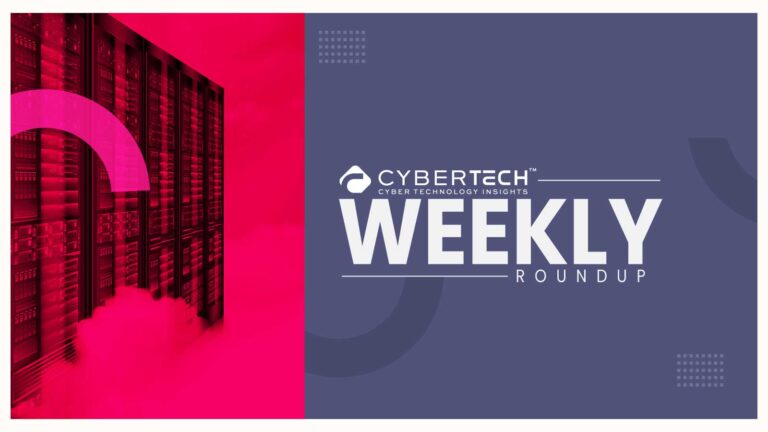CISA changes are reshaping the CVE program, boosting transparency, strengthening public-private partnerships, and improving data quality. Cybersecurity leaders weigh in on CISA’s evolving role and its impact on modern threat intelligence and defense strategies.
Introduction: Reflecting on a Decade of CISA
As CISA marks its 10th anniversary, it is timely to reflect on the agency’s impact on national cybersecurity and the evolving challenges facing the C-suite. Since its establishment, CISA has served as a critical bridge between the federal government and private-sector organizations, enabling real-time threat intelligence sharing, coordinated incident response, and guidance for protecting critical infrastructure.
Over the past decade, CISA has transformed how organizations detect, respond to, and mitigate cyber threats, providing legal protections that encouraged companies to share sensitive threat data without fear of liability. CISA has helped prevent large-scale ransomware attacks and strengthened resilience across industries, shaping the nation’s cybersecurity posture.
Recommended CyberTech Insights: CyberTech Top Voice: Interview with Bill Robbins, President at Menlo Security
Now, as discussions around potential legislative changes, including expiration, modification, or extension, gain urgency, executives face a pivotal moment. Understanding CISA’s legacy, assessing the stakes of its potential expiration, and preparing strategic responses are imperatives for boards and C-suite leaders navigating today’s complex threat landscape.
Ahead of CISA’s 10th anniversary, several global cybersecurity leaders sat down with Sudipto Ghosh (Head of Global Marketing at Intent Amplify) to share their perspectives on the agency’s legacy, the potential risks of its expiration, and what it means for executive-level cybersecurity strategy.
Among the experts providing insights were:
- Louis Eichenbaum, Federal CTO, ColorTokens
- Marcus Fowler, CEO, Darktrace Federal
- Heath Renfrow, CISO, Fenix24
- Randolph Barr, CISO, Cequence Security
- Tim Mackey, Head of Software Supply Chain Risk Strategy, Black Duck
- Devin Ertel, CISO, Menlo Security
- Matthieu Chan Tsin, SVP, Resiliency Services, Cowbell
- Crystal Morin, Cybersecurity Strategist, Sysdig
- Miguel Sian, SVP of Technology, Merlin Cyber
- Chad Cragle, CISO, Deepwatch
Their commentary highlights a range of perspectives—from the critical role CISA has played in enabling cross-sector threat intelligence sharing to nuanced views on how the private sector is building its own agile defense mechanisms.
CISA’s Legacy and Impact on National Cybersecurity
The Cybersecurity and Infrastructure Security Agency (CISA) was established in 2018 under the Department of Homeland Security with a clear mandate: to enhance the nation’s cybersecurity posture by facilitating timely information sharing between the federal government and the private sector. Its creation recognized that modern cyber threats transcend organizational and sector boundaries, requiring a coordinated approach that combines government intelligence with private-sector expertise.
Marcus Fowler, CEO, Darktrace Federal highlighted the importance of CISA in the AI era. Marcus said, “Ten years ago, the Cybersecurity Information Sharing Act of 2015 was instrumental in bringing government and industry together to improve the nation’s cybersecurity. A decade on, as the volume and sophistication of threats continue to rise, it is important to reauthorize the statute and update it for new challenges across critical infrastructure, operational technology, and AI-enabled attacks— challenges that only defenders operating at the speed of Artificial Intelligence can address.”
Purpose and Mission
CISA’s primary role has been to serve as a bridge between critical infrastructure operators and federal cybersecurity agencies. By centralizing threat intelligence, providing situational awareness, and offering operational guidance, CISA enables organizations to respond more quickly to emerging threats. Its initiatives, such as the Automated Indicator Sharing (AIS) program, enable private companies to share cyber threat indicators with the government in real-time, thereby improving collective situational awareness across sectors.
Top Cybersecurity News and Analysis: Cybersecurity for Good: Nonprofits That Safeguard Our Digital Lives
Legal Protections Encouraging Data Sharing
One of the most critical enablers of this collaboration has been legal protections that shield companies from liability when sharing sensitive threat information.
The Cybersecurity Information Sharing Act (CISA, 2015), for instance, ensures that companies can provide indicators of compromise without fear of antitrust violations, regulatory penalties, or civil liability. These protections have been essential in building trust between government agencies and private-sector stakeholders, encouraging organizations to contribute actionable intelligence.
Heath Renfrow, CISO at Fenix24, explained the gaps in the current CISA objectives.
Heath said, “I remain highly skeptical of anything government-driven when it comes to cybersecurity. The reality is that most federal programs and legislation are far removed from the actual front lines of the cyber threat landscape. While the Cybersecurity Information Sharing Act was well-intentioned, its practical impact has been limited at best.”
Heath added, “From my perspective, the most meaningful and timely threat intelligence is already exchanged between private-sector partners, especially those actively engaged in incident response and managed services. By the time federal agencies push out advisories, the intel is often dated, sanitized to the point of being less actionable, or constrained by bureaucratic processes.
Reauthorizing the law may provide some legal clarity and liability protection, but I don’t believe it will meaningfully improve the speed or quality of threat sharing. What we need is deeper collaboration between private entities that have “hands-on-keyboard” experience during attacks, not additional layers of government oversight that can unintentionally slow down response efforts.
If Congress fails to act, the headlines will make it sound like a catastrophic loss for cybersecurity, but the reality is that the private sector has already built more agile, effective sharing mechanisms. The real challenge isn’t legislation — it’s aligning incentives and building trust between companies to share actionable intelligence at the speed required to counter today’s threat actors.”
Demonstrated Impact
CISA’s collaborative framework has measurably improved national cybersecurity resilience:
According to recent reports, Automated Indicator Sharing (AIS) has facilitated the exchange of millions of threat indicators annually, enabling faster detection and mitigation of ransomware campaigns, phishing attacks, and nation-state intrusions.
Cross-sector collaboration has helped prevent major disruptions, such as the coordinated response to 2020 ransomware attacks on critical infrastructure, where shared intelligence allowed energy and healthcare providers to anticipate and block attacks.
Private-sector participation in programs like the CISA Cybersecurity Advisory (CSA) bulletins has increased response speed and incident awareness, reinforcing resilience across finance, energy, transportation, and healthcare sectors.
Read more on Cybersecurity Trends: What Is Cyber Resilience in 2025? A Modern Business Perspective
The Stakes of CISA Expiration
CISA’s potential expiration would carry significant risks for national and organizational cybersecurity, particularly for executives responsible for risk management and operational resilience.
Randolph Barr, CISO at Cequence Security, explained the immediate and long-term impact of CISA’s expiration. Randolph said, “Prior to the passage of CISA, we as security professionals were limited in how we could share information. Most of our exchanges happened behind closed doors, often in small, trusted circles, and rarely extended into broader communities. As a result, other security teams had to rely heavily on their own resources, such as threat intelligence feeds, hunting exercises, and internal investigations, which took valuable time to piece together how others might be experiencing incidents.
CISA changed that dynamic by providing legal protections and a formal framework for sharing. It gave us both the flexibility and the guidance we needed to collaborate more openly without fear of liability.”
Randolph added, “For years, security professionals have been competing against adversaries who freely share knowledge and recruit others to amplify their attacks. That imbalance hasn’t gone away, but CISA gave us a mechanism to close the gap, enabling defenders to collaborate in ways that were previously out of reach.
If CISA is allowed to expire, the loss of protections such as liability shields, antitrust exemptions, and safe harbor for monitoring would have a significant impact. Information sharing would decrease dramatically, as organizations would once again have to worry about the legal risks of exchanging threat data. Security teams would be forced to fall back on their independent feeds, siloed intelligence, and their own interpretations of potential attacks—slowing down detection, limiting context, and reducing the collective resilience we’ve built over the past decade.
Like most security professionals, I believe reauthorization of CISA is critical. Considering the short time remaining before the law’s expiration, a clean 10-year extension makes the most sense to preserve continuity and avoid gaps in our defenses. Ideally, extending through 2035 with updates to address AI-driven threats and other modern challenges would provide even greater long-term stability. But at this moment, ensuring uninterrupted legal protections must be the priority, even if modernization comes in a later update.”
Recommended for CISOs: CyberTech Top Voice Interview: Eric Schwake, Director of Cybersecurity Strategy at Salt Security
Reduced Threat Intelligence Sharing
Without CISA as a central coordinating entity, the flow of real-time threat intelligence between government and private-sector organizations would likely diminish. Programs like Automated Indicator Sharing (AIS) and regular CISA advisories ensure companies are aware of emerging threats before they escalate. The loss of these channels could leave organizations reacting to threats rather than proactively mitigating them.
Louis Eichenbaum, Federal CTO, ColorTokens, said, “As we approach the 10-year anniversary of the Cybersecurity Information Sharing Act, its potential expiration poses a risk to the integrity and responsiveness of our national cyber defense. CISA has been instrumental in enabling timely, liability-free sharing of threat intelligence between the federal government and private sector, especially critical in an era where AI-driven threats challenge not just data confidentiality but data integrity. Without reauthorization, we risk losing visibility into emerging threats and weakening interagency coordination, particularly in the wake of recent high-profile breaches. Letting CISA lapse would undermine years of progress and leave dangerous gaps in our ability to respond to breaches and vulnerabilities swiftly and effectively.”
Slower Incident Response
CISA plays a critical role in orchestrating cross-sector incident response, connecting private-sector security teams with federal resources and expertise. Expiration would fragment these communications, potentially leading to delayed detection, slower mitigation, and increased downtime during cyber incidents. For organizations reliant on CISA alerts, this lag could translate directly into financial losses and operational disruption.
Tim Mackey, Head of Software Supply Chain Risk Strategy, Black Duck, said, “Without cyber information sharing, attackers have an inherent advantage – they can replay their attacks for longer. While it might be tempting to view cyber incidents as only encapsulating the current threat landscape, the public’s threat priorities are more a reflection of media interest than actual threat management. And this is why viewing CIRCIA as a viable alternative to the renewal of CISA is problematic. CIRCIA focuses on ransomware, and as with most legislation, it’s reactionary. So, while it’s worth revisiting CISA provisions considering today’s AI-powered threat landscape, its information sharing provisions, and particularly its liability protections, should remain in effect until replacement legislation is enacted. To do otherwise hands adversaries an advantage that is easily mitigated by extending CISA contingent on replacement legislation.”
Increased Uncertainty Around Liability and Compliance
One of CISA’s key benefits is the legal shield it provides for companies sharing threat data. Without this framework, organizations could face heightened liability risks when reporting incidents or sharing sensitive indicators, creating regulatory ambiguity. This uncertainty may discourage proactive collaboration, weakening the collective security posture across critical industries.
Devin Ertel, Chief Information Security Officer, Menlo Security, said, “CISA has played a critical role in helping organizations share cyber threat information safely and effectively. By putting the right legal safeguards in place, it gave companies the confidence to share data with each other and with the government without fear of liability. That trust has been the foundation of a stronger, more collaborative cybersecurity community, one that can spot and respond to threats faster and more effectively.”
“If CISA isn’t renewed, we risk losing that foundation. The information‑sharing channels we count on could break down, and the protections that encourage collaboration would disappear. Without that cooperation, defenders will find themselves more isolated at a time when attacks are only growing in scale and sophistication. Our security has always been strongest when we work together, and pulling back now would only give our adversaries the advantage,” added Devin.
Executive-Level Consequences
For boards and C-suite leaders, the expiration of CISA would necessitate reevaluating cybersecurity strategy, risk appetite, and governance frameworks. Executives may need to:
- Reassess third-party and supply chain risk exposure without centralized threat insights.
- Increase internal investment in threat detection and intelligence teams to compensate for lost federal coordination.
- Redefine incident response protocols to ensure compliance and rapid action in a more fragmented cybersecurity landscape.
The C-Suite must view CISA’s potential expiration as a strategic inflection point. By proactively reviewing partnerships, internal processes, and industry collaborations, executives can maintain a strong cybersecurity posture, minimize exposure to operational and reputational risk, and ensure the organization is prepared for an evolving threat landscape.
Strategic Considerations for the C-Suite
As the potential expiration of CISA looms, executives must take a proactive stance on cybersecurity governance and operational readiness. The loss of a central federal coordinating body heightens the need for organizations to independently maintain robust threat intelligence, incident response, and compliance frameworks.
Matthieu Chan Tsin, SVP, Resiliency Services, Cowbell, said, “The current public-private partnership model, while imperfect, represents a middle ground between two problematic extremes: a system where private companies control many aspects of a matter that touches national security, and do so for profit, and a system that could lead to excessive government regulations and raises concern over privacy infringement. The Cybersecurity Information Sharing Act (CISA) has successfully fostered crucial information sharing that allows the United States Government to learn about the cyber incidents that hinder private sector entities, while providing companies access to government resources and information whose costs would be prohibitive for most private sector entities.
Without CISA, there would be a multitude of negative consequences for SMBs in particular, especially because of their reliance on cybersecurity vendors who depend on government threat intelligence sharing to keep their detection systems up to date. Given that cybersecurity is relatively new, compared to most other types of risks, dismantling these collaborative frameworks would be counterproductive when cooperation is more critical than ever.”
Key Recommendations for Leaders:
Review Threat Intelligence Partnerships
Executives should conduct a comprehensive assessment of current intelligence-sharing agreements with vendors, industry groups, and federal programs. Identify gaps that could emerge if CISA’s services diminish and ensure continuity of critical threat feeds. Expanding relationships with private-sector intelligence providers can help maintain situational awareness and early warning capabilities.
Miguel Sian, Senior Vice President of Technology, Merlin Cyber, said, “Reauthorizing the Cybersecurity Information Sharing Act of 2015 and the State and Local Cybersecurity Grant Program are critical for the private and public sector’s continued collaboration in combating adversaries who are increasingly emboldened in targeting our government networks and critical infrastructure. With the growing speed, sophistication and variety of threats, we must continue to tap into the innovations and ingenuity of our collective cyber defense. It’s encouraging to see that the new reauthorization explicitly incorporates Artificial Intelligence (AI) as an enabler to combat the evolving threats. The question now becomes how do we operationalize the technology so that it’s fit-for-purpose and that it meets the speed and scale necessary to advance our cyber defenses.”
Establish Internal Frameworks for Incident Sharing and Response
Organizations must strengthen internal mechanisms for capturing, analyzing, and disseminating threat information across business units. This includes defining clear escalation paths, response protocols, and accountability structures. By institutionalizing these practices, organizations can mitigate the impact of slower external intelligence flows and maintain operational resilience.
Engage with Industry Consortia
Participation in sector-specific cybersecurity consortia—such as Information Sharing and Analysis Centers (ISACs)—can help organizations compensate for potential gaps in government-provided intelligence. Active engagement allows executives to benchmark against peers, share best practices, and collaboratively address emerging threats, ensuring their organization is not operating in isolation.
Chad Cragle, Chief Information Security Officer, Deepwatch, said, “From a defender’s standpoint, the Cybersecurity Information Sharing Act has been one of the few legislative tools that truly moved the needle. It gave the industry the legal clarity to share threat intel quickly, directly, and without second-guessing the lawyers. Programs like JCDC have only amplified that value, allowing us to work shoulder-to-shoulder with the government in an operational, rather than just performative, way. If the law is allowed to lapse, it reintroduces hesitation at the wrong time. Threat actors aren’t slowing down—and we can’t afford to either.”
Chad added, “At the same time, a renewal shouldn’t simply be a rubber stamp. The threat landscape has evolved significantly over the past decade, as have the risks associated with data handling and cross-sector coordination. This is an opportunity to fine-tune the law, preserving its core strength while ensuring it reflects today’s privacy expectations, supply chain realities, and operational complexity. Getting this right means building on what works while adapting to what has changed.
We need every tool that helps defenders share intelligence without second-guessing it. Any resistance will likely come from privacy advocates—and that is understandable—but from an operational perspective, allowing CISA to expire would be a setback at exactly the wrong time.”
Preparing for Legislative Changes
The future of CISA will ultimately be shaped by legislative decisions. Executives must anticipate multiple scenarios—extension, modification, or expiration—and align their cybersecurity strategies accordingly.
Proactive planning ensures that organizations can maintain resilience and compliance regardless of the outcome.
Scenario: Extension
If CISA’s mandate is renewed or extended, organizations can continue leveraging existing federal programs and threat intelligence channels. Leaders should:
- Maintain active participation in CISA-led initiatives such as Automated Indicator Sharing (AIS) and sector-specific advisories.
- Use the extension period to strengthen internal incident response frameworks in parallel, ensuring operational readiness if future changes occur.
Scenario: Modification
Legislative modifications could alter the scope, authority, or legal protections provided by CISA. In this case, executives should:
- Conduct a gap analysis to identify areas where new restrictions or procedural changes could impact threat sharing.
- Update internal cybersecurity policies and reporting procedures to align with the revised legal framework.
- Increase engagement with industry consortia and private intelligence providers to compensate for any reduction in federal support.
Scenario: Expiration
An outright expiration would eliminate CISA’s centralized coordination and legal protections. Executives should:
- Reassess organizational risk appetite, particularly for sectors reliant on federal threat intelligence.
- Enhance internal intelligence-sharing capabilities and establish robust incident response protocols across business units.
- Invest in private-sector partnerships and cross-industry collaboration to maintain situational awareness and resilience.
Crystal Morin, Cybersecurity Strategist, Sysdig, said, “The Cybersecurity Information Sharing Act of 2015 (CISA) has played a pivotal role in both fostering information sharing and shaping the way the U.S. Government and the private sector collaboratively defend against cyber threats. Modern adversaries are stealthy and fast, and an open means of communication is critical for helping defenders stay ahead.”
Crystal added, “One of the most impactful aspects of CISA has been its liability protections. Companies that share indicators of compromise (IoCs) “in good faith” with DHS (through its Cybersecurity and Infrastructure Security Agency, also known as CISA) are shielded from lawsuits, antitrust laws, and Freedom of Information Act (FOIA) requests. That safeguard created the trust necessary for companies across the spectrum to contribute to a more robust, proactive national defense. It also reinforced the importance of Information Sharing and Analysis Centers (ISACs) and cross-sector collaboration, which have become cornerstones of how industries defend themselves.
CISA allows organizations to share threat intelligence in near real-time without the fear of reprisal. Through daily, informal information exchanges, participants can bolster their defenses against active threats. According to Rep. Andrew Garbarino, a single organization had already shared 84 formal reports earlier this year with thousands of partner organizations. CISA was established following the 2015 OPM breach, when the U.S. Government realized there needed to be a means for quickly sharing IoCs from government systems with private sector partners. It showed its value in 2020 following the SolarWinds supply chain attack that impacted government and Fortune 500 companies when it was critical to expedite bi-directional information sharing.
CISA’s importance for U.S. national security cannot be overstated. Without legal protections. Many legal departments would advise security teams to pull back from sharing threat intelligence, resulting in slower, more cautious processes. That shift would reduce the flow of high-fidelity, real-time insights, which is exactly the kind of intelligence that organizations rely on to stop adversarial campaigns before they escalate. The end of CISA would be a gift to attackers, giving them more freedom to operate while leaving potential targets in the dark.
Fortunately, it appears that Congress is likely to pursue at least a short-term extension, if not the entirety of the updated legislation, dubbed the Widespread Information Management for the Welfare of Infrastructure and Government Act (WIMWIG Act). One thing is for certain: there is bipartisan support for the value of a strong cyber defense. But any delay or uncertainty risks undermining the trust and momentum that CISA has built. At a time when attackers are increasingly leveraging AI and targeting global supply chains, it’s more important than ever that the U.S. has a robust information-sharing ecosystem.
Ultimately, CISA’s reauthorization isn’t just another cyber policy, it’s the backbone of America’s cyber defense system. Without an extension or updated legislation, the strong cyber defense ecosystem it has built will collapse.”
Strategic Takeaway
C-Suite leaders must treat legislative uncertainty as a key operational risk. By preparing for all potential outcomes, organizations can ensure continuity of threat intelligence, maintain regulatory compliance, and safeguard operational and reputational integrity. Proactive planning will position boards and executives to act decisively, regardless of how CISA’s mandate evolves.
Conclusion: Actionable & Forward-Looking
CISA’s potential expiration serves as a critical wake-up call for executives. While the agency has historically provided a central hub for threat intelligence and cross-sector coordination, its uncertainty underscores the need for organizations to take ownership of their cybersecurity posture.
Key Executive Actions:
- Review Internal Policies: Conduct thorough audits of threat intelligence, incident response, and compliance frameworks to identify gaps that could emerge if federal support diminishes.
- Strengthen Partnerships: Expand collaboration with private intelligence providers, sector-specific consortia, and peer organizations to maintain visibility on emerging threats.
- Maintain Threat Visibility: Invest in continuous monitoring, threat sharing, and proactive mitigation strategies to ensure operational resilience.
By proactively implementing these measures, C-Suite leaders can minimize exposure to operational, regulatory, and reputational risks. The changing landscape also presents an opportunity to institutionalize best practices and enhance organizational agility, ensuring that cybersecurity strategy remains robust regardless of federal developments.
Example:
As CISA faces an uncertain future, executives must act now to safeguard organizational resilience. By reinforcing threat intelligence processes and fostering collaboration across public and private sectors, leaders can ensure their organizations remain secure — regardless of legislative outcomes.
FAQs: Executive Concerns on CISA’s Future
What is CISA, and why does it matter to my organization?
The Cybersecurity and Infrastructure Security Agency (CISA) is a federal agency responsible for enhancing national cybersecurity and critical infrastructure resilience. It acts as a central hub for real-time threat intelligence, incident response coordination, and guidance for both public and private sectors. For organizations, CISA provides early warnings, actionable threat indicators, and legal protections for sharing sensitive information, reducing risk exposure and improving operational resilience.
What happens if CISA expires at the end of September?
Expiration would eliminate the agency’s centralized coordination and legal shields, potentially slowing threat intelligence sharing, delaying incident response, and increasing uncertainty around liability and regulatory compliance. Organizations could face greater operational, financial, and reputational risks, particularly if they have relied heavily on CISA for cross-sector threat visibility.
How should executives adjust their cybersecurity strategy in response?
Executives should proactively review internal cybersecurity policies, strengthen threat intelligence partnerships, and establish robust incident response frameworks. Boards may also need to reevaluate risk appetite, governance structures, and third-party dependencies to ensure organizational resilience in a more fragmented threat landscape.
Are there alternative frameworks for threat intelligence sharing if CISA is not extended?
Yes, Organizations can leverage private-sector intelligence providers, industry consortia (e.g., ISACs), and cross-industry partnerships to maintain situational awareness. Establishing internal protocols for threat data collection, analysis, and sharing is also essential to mitigate gaps left by a reduction or absence of federal coordination.
What role does the C-suite play in maintaining compliance and resilience?
The C-suite is responsible for setting strategic priorities, allocating resources, and overseeing cybersecurity governance. Executives must ensure that policies, incident response protocols, and threat intelligence initiatives are robust, adaptable, and aligned with regulatory requirements. Active engagement with boards and industry partners is critical to safeguard operations, reduce exposure, and maintain stakeholder confidence.
To participate in our interviews, please write to our CyberTech Media Room at sudipto@intentamplify.com
Top Cybersecurity Updates:
Nico Hulkenberg to Join Admin By Request at it-sa Expo&Congress 2025
Cyber Skills Shortage Forces 64 Percent of EMEA Organizations into Risky Security Shortcuts
Keeper Security Launches Back-to-School Cybersecurity Guide To Strengthen Digital Safety







